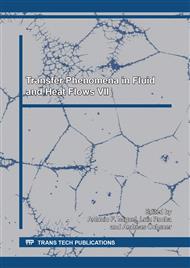p.71
p.83
p.91
p.99
p.112
p.125
p.133
p.151
p.161
Heat Radiation Effect of Passenger Car Headlamp Using Plate Heat Pipe
Abstract:
The existing heat pipe applied to a LED headlamp has a large size although it has only small area of contact. Therefore, it is difficult to achieve a harmonious radiation of heat along with the difficulty in attaching the LED due to its large volume. This study proposed a plate heat pipe to solve the aforementioned problems. Through the study, the effects of the thickness and acetone filling rate on the heat radiation effects of a plate heat pipe at room temperature and vehicle driving environment were confirmed along with comparison with the heat radiation effects of the existing copper heat pipe. The heat radiation effects were checked by attaching a thermocouple to the evaporator, adiabatic section and condenser of the LED. As the results of the experiment, it was found that a temperature below 120oC, which is the allowable temperature to guarantee the performance of the LED, is maintained. In addition, as the results of comparison of radiation of heat, it was confirmed that the plate heat pipe with a thickness of 2 mm and 20% filled with acetone has a better performance than the existing copper heat pipe.
Info:
Periodical:
Pages:
112-124
Citation:
Online since:
January 2019
Authors:
Keywords:
Price:
Сopyright:
© 2019 Trans Tech Publications Ltd. All Rights Reserved
Share:
Citation:


